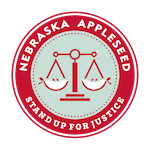 This month, the federal Temporary Assistance for Needy Families (TANF) program turned 20, which makes now a good time to look at how the program is working to help fight poverty for working families.
This month, the federal Temporary Assistance for Needy Families (TANF) program turned 20, which makes now a good time to look at how the program is working to help fight poverty for working families.
TANF is the only federal program that provides cash assistance to low-income families with children, and recently, new information has been released by the Administration for Children and Families on how each state is spending its TANF dollars.
TANF is a block grant, meaning states have flexibility to use this funding in the ways that work best for them for a variety of services to improve employment, as well as child and family outcomes. A portion of TANF funds provide assistance, through monthly cash payments and services, to low-income families with children to ensure the children can be cared for in their own homes instead of entering into the child welfare system. In fact, more than 70 percent of TANF recipients are children.
The new data from 2015 shows that states spent less than half of their TANF dollars on basic assistance, as well as work programs, education and training activities, and child care. Additionally, about 15 percent of the TANF dollars went to child welfare services, pre-kindergarten and Head Start programs, as well as services for children and youth (such as after-school programs and home visiting).
Currently Nebraska is spending only around 6 percent of our TANF funds on the child welfare system. This is generally a good thing because it allows our limited TANF funding to be used to pay for important services that can help families escape poverty so their children do not have to become involved in the child welfare system. Last year, we put together a primer on Nebraska foster care financing.
TANF has done a lot of good to help move many Americans, including many Nebraskans, out of poverty, but as TANF turns 20 this month, we need to have a serious conversation about improving the program so that it’s working the way it was supposed to – to help working families build a bridge out of poverty while being able to meet their children’s needs.
